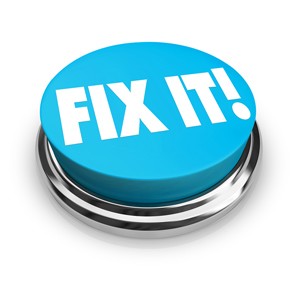A 3-STEP PRIMER ON IMPROVING BOTH THE CLIENT BRIEF AND THE AGENCY/CLIENT RELATIONSHIP.
In April, Adweek ran a story titled, “New ANA Survey Shows the Gap Between Clients and Agencies on Issues Like Compensation and Briefs.” 
The ANA is the Association of National Advertisers, an organization begun in 1910 with more than 650 companies, representing 10,000 brands and annual advertising and marketing expenditures exceeding $250 billion. When this group speaks, ad people listen.
So when I read this line from the ANA’s Executive Summary, I was aghast:
Agencies emphatically believe that clients do not provide clear assignment briefings.
To add salt to this wound, of the 105 agencies surveyed by ANA, not one “strongly agreed” that clients provide clear client briefings. Not one.
I won’t win any friends in the ad agency world when I say this, but it’s your own damn fault.
Nowhere in the Executive Summary did I see a single mention of the creative brief. Only the client brief was pilloried for its weaknesses.
The briefing, from client brief to creative brief, is the beginning of the creative process. Ad agencies own this process. So own it!
Here, then, are three tangible steps that advertising agencies must take to correct this failure.
1. Take the initiative
Don’t complain about a bad client brief. Do something about it. You can’t afford to make excuses.
Whether your relationship with the client is brand new or twenty years old, the first step of the creative process begins with a brief. This is when you, the ad agency, must be prepared to perform in-the-field triage. If past experience tells you to anticipate an unclear brief, address it on the spot.
How? The easiest and most direct step you can take is to make sure both an account person and a creative person review the client brief while it’s still fresh. Build this step into your process and communicate it clearly to your client. Make it non-negotiable.
When I worked for a pharmaceutical ad agency in Chicago 20 years ago, I was startled, at first, by what happened when a new client came to visit for the first time. Agency executives began not by trotting out the creative team, not the account management team, not even research. They began the day-long orientation by introducing the new client to the accounting department: accounts receivable and accounts payable. It’s one of the reasons this agency remained profitable…and open.

The power to set expectations resides with you, the ad agency. So set them. Don’t wait for them to be set for you.
2. Fix a bad client brief with a great creative brief
Never let a bad client brief stop you from delivering a stellar, inspired creative brief.
A client brief is only one-half of the briefing process. It is a statement of the problem the client wants the ad agency to address.
The agency’s creative brief is the response.
That has always been one of its primary functions. The creative brief is a clarifying document. It clarifies not only for the creative team, but also for the client. The agency’s creative brief says to the client: This is what we think you have asked us to do.
Ergo, there is no excuse for a bad client brief. When the client sees the ad agency’s response to its brief, and if anything about the assignment was not clear, it will show up in the creative brief.
Ideally, the creative brief will have overcome the client brief’s impreciseness.  But even if it doesn’t, there is never any reason why an ad agency should complain about missing the mark with its creative product.
But even if it doesn’t, there is never any reason why an ad agency should complain about missing the mark with its creative product.
The creative brief, well written and appropriately inspiring, is designed to prevent poor creative from happening.
3. Collaborate, collaborate, collaborate!
I am constantly amazed that “collaboration” is still such a foreign concept and unfamiliar word in the ad game. That is changing, but slowly.
The model is the copywriter/art director collaboration that has existed at ad agencies for decades. This model should be replicated between creative and account management, and I have written extensively on this topic. It should also be replicated from day one with the parties at the client and the agency who are responsible for “briefing,” which includes the client brief and the agency’s response, the creative brief.
So, implement these three steps in your briefing process and you should never have to endure an unclear assignment from your client.
Pipe dream? No. Not at all. Failure to believe and act on these ideas sets you up for more failure.
Remember, you’re not putting your faith in a document—either the client or the creative brief. You’re putting your faith in its clarifying and inspiring powers. 

